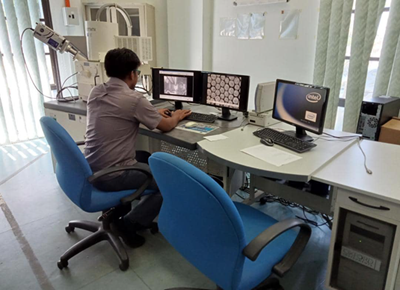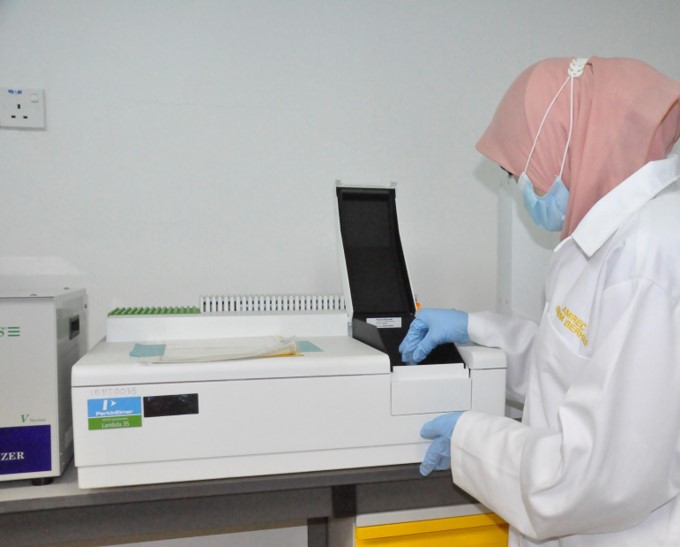

 This is a non- destructive method to analyze the chemical functions by using the vibration detection that correspond
to the chemical bonding of a particular material.
The detection is based on the infrared irradiation absorption of the material, which is then translated into a spectrum
with intensity of absorption at certain wavelengths. These wavelengths reflected the characteristics of the chemical bond of the materials.
This is a non- destructive method to analyze the chemical functions by using the vibration detection that correspond
to the chemical bonding of a particular material.
The detection is based on the infrared irradiation absorption of the material, which is then translated into a spectrum
with intensity of absorption at certain wavelengths. These wavelengths reflected the characteristics of the chemical bond of the materials.
The test method is in accordance with ASTM E1252 – 98 and ASTM E573-01 for Qualitative Measurement of IR Spectrum. Various application can be listed as follows:
 Energy dispersive X-ray spectroscopy (EDS or EDX) is an analytical technique used for the elemental analysis or
chemical characterization of a sample based on the principle of an interaction of some source of X-ray excitation
with sample's elements. Its characterization capabilities are due in large part to the fundamental principle that each element has a
unique atomic structure allowing a unique set of peaks on electromagnetic emission spectrum.
Energy dispersive X-ray spectroscopy (EDS or EDX) is an analytical technique used for the elemental analysis or
chemical characterization of a sample based on the principle of an interaction of some source of X-ray excitation
with sample's elements. Its characterization capabilities are due in large part to the fundamental principle that each element has a
unique atomic structure allowing a unique set of peaks on electromagnetic emission spectrum.
Our energy dispersive spectrometer microanalysis system coupled with Field Emission Scanning Electron Microscope is able to execute the material identification and weight percentage determination as well as standard quantitative analysis of mass fraction down to 1% as stipulated by ISO 22309-2011 Microbeam analysis – quantitative analysis using energy dispersive spectrometry (EDS) for elements with an atomic number of 11(Na) or above.
 UV visible spectrometer (UV-Vis) is a method to identify absorbance of material at their specific wavelength. The machine is
capable to analyse liquid and powder sample.
UV visible spectrometer (UV-Vis) is a method to identify absorbance of material at their specific wavelength. The machine is
capable to analyse liquid and powder sample.
It measures the intensity of light transmitted through a sample compared to a reference measurement of the incident light source.
The wavelength range is between 200 – 1000 cm-1. The standard used in this test is ASTM E0169 – 16, General Techniques of Ultra violet quantitative analysis